- Rent, Lease, or Purchase
- |
September 19, 2022
Shipping Container Data Center: The Future of IT Facilities
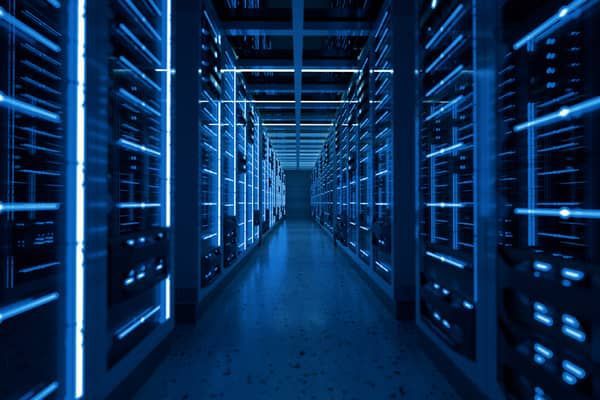
Containerized data centers are one of the latest trends in information technology operations. Though Microsoft and Google were the earliest adopters of the shipping container data center, the early 2000s saw them widely implemented in military and other defense deployments.
Since then, numerous companies have built data centers in shipping containers to secure and organize critical IT infrastructure. Let's take a comprehensive look at shipping container data centers and the benefits they offer over traditional facilities.
What You Need to Know About Containerized Data Centers
A containerized data center is a modular, prefabricated container structure that houses critical IT infrastructure. You can house servers and other IT equipment in a containerized data center. They offer many benefits over traditional data centers, including portability, scalability, faster deployment, energy efficiency, and lower costs.
Also known as modular data centers, these units help secure and organize servers, mainframes, routers, UPS, power distribution, and so on. The portability makes them ideal for companies that need to install IT infrastructure in multiple locations. You can stack freight containers to create more storage space in the same area.
Many organizations deploy modular data center containers for computing power in areas hit by natural calamities. Other sectors that use containerized data centers are IT and Telecommunications, BFSI, Government, Healthcare, Education, Entertainment, and Media.
Modified Shipping Containers for Military Solutions
Shipping containers, also known as Conex boxes, are highly resilient; they save a lot of time and money as opposed to building from the ground up. The military can transport and scale container-based structures according to their operations.
Rough military work environments, from sandstorms to sub-zero temperatures, have increased the necessity of structures that can endure extreme temperatures and explosions. The military uses container structures for:
- Military Operations in Urban Terrain (MOUT) Training Structures
- Portable Storage and Office Space
- Barracks and Housing
- Counter Improvised Explosive Device (IED) Training Lanes
- After Action Review (AAR) Structures
- Data centers
Based on the flexible requirements of today's military, versatile shipping container structures are clear winners.
Structure of Containerized Data Centers
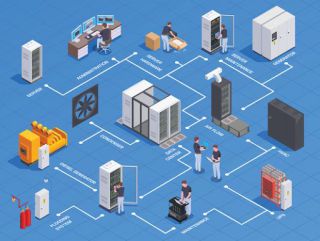
Unlike a traditional data center, a containerized facility does not have a fixed layout. You can modify the plan according to your data center infrastructure, data capacity, storage devices, etc. A modular data center may include:
- Diesel generators
- Modular UPS
- In-built battery
- Condensers
- Medium and low voltage distribution units
- Datacenter infrastructure management (DCIM) controller
- Fire suppression unit
- Racks and shelves
- Containment
- Single row/multi-row cooling systems
- Flooding system
Compartmentalization of Modular Data Centers
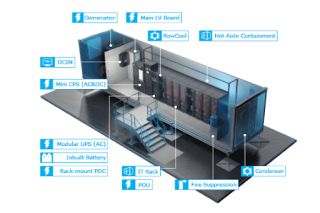
If you're planning to migrate your existing data center or build new data center containers, you must first select a suitable structure. For instance, you lean towards military shipping containers with additional security features when facing adverse conditions. Next, you must classify appropriate sections for each sub-system of your containerized data center.
You can build separate compartments for cooling equipment, generators, and condenser units, along with space for monitoring and maintenance. Dividing the container into sections will optimize the space and provide easy access to the modular data center systems. The prefabricated data centers from Delta Power Solution are excellent examples of a compartmentalized layout.
Real-Life Examples of Containerized Data Centers
Major tech giants and government organizations worldwide have started using modular data centers to protect their technology investment. Some real-life examples include:
Microsoft
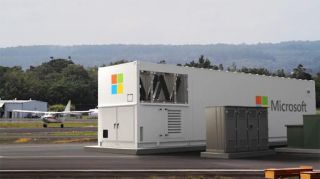
Microsoft recently announced its new Azure Modular Data Center (AMDC). Built inside a 40-foot container unit, the building houses the Azure Stack Hub systems and supporting infrastructure.
Google presented its first energy-efficient data center at the Google Efficient Data Centers Summit, CA, in 2009. It houses more than 45,000 servers in 45 containers, supporting 10 MW of IT equipment load. Take a tour of the facility to learn more about its layout and compartmentalized structure.
Delta's Containerized Data Center
Delta Power Solutions (DPS) offers a fully-configured and well-integrated data center for edge computing, cloud, telecom, and content delivery. DPS tests their data centers before they deploy to ensure high system integration and reliability. Watch how DPS builds their containerized data centers.
Pros and Cons of Containerized Data Centers
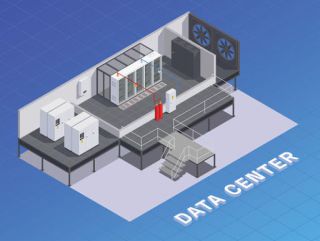
The benefits of a container data center are:
- Cost-effective: Traditional brick-and-mortar structures for housing the data center can be pretty expensive. On the contrary, you get a pre-built unit when you use freight containers, providing significant cost savings.
- Fast Deployment: Since modular data centers have prefabricated housing, they have shorter installation timeframes. Additionally, containerized units often come in standard sizes, meaning you can expand your existing capacity without any hassles.
- Remote Operations: Containerized data centers are highly portable, enabling you to operate from remote locations efficiently. If you want to move your business to a different location, you can carry your data center along with you.
- Weather-resistant: Cargo containers have a high-strength Corten steel body that helps protect your data infrastructure from wind, moisture, and climactic weathering.
- Easy Access: Double door containers have access doors at either end, allowing to enter the data center quickly for daily operations and maintenance.
While there are plenty of advantages to celebrate, you must also consider the following challenges when building a containerized data center:
- Uninterruptible power supplies: Freight containers require an external power source to operate the electronics inside. You may need separate support containers to place the power and cooling equipment alongside a containerized data center.
- Networking equipment: If you place your modular data center container too far from your operations area, you may have to shell out additional expenses for cables and other connections.
Traditional Data Centers Vs. Containerized Data Centers
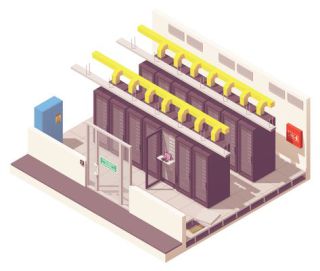
A containerized data center may allow you to free up valuable square footage from the main building, giving you more space for operations. Modular data centers are highly portable, enabling you to move your systems as per your needs.
Conclusion
Containerized data centers are a quick, reliable, and efficient way of housing your critical IT infrastructure. Freight container data centers are also stackable and portable, allowing you to expand or move your facility as needed. However, designing and managing a modular data center requires appropriate design, efficient planning, and technical expertise.
Mobile Modular Portable Solutions offers high-quality new and used shipping containers for sale and rent. Call us today at 866-260-1823 or request a quote to learn more about our industry-specific container solutions.
Frequently Asked Questions
What Is a Container Data Center?
A container data center uses prefabricated freight containers to house the IT infrastructure and systems. These units are highly portable, customizable, and easy to expand.
What Is the Growth Rate of Containerized Data Center Market?
A recent study shows that the containerized data center market will grow at a compounded annual growth rate (CAGR) of 25% from 2021 to 2026.
Can You Prefabricate a Data Center?
A containerized data center uses a prefabricated cargo container as housing. These prefabricated units come ready to use.
Related Blogs
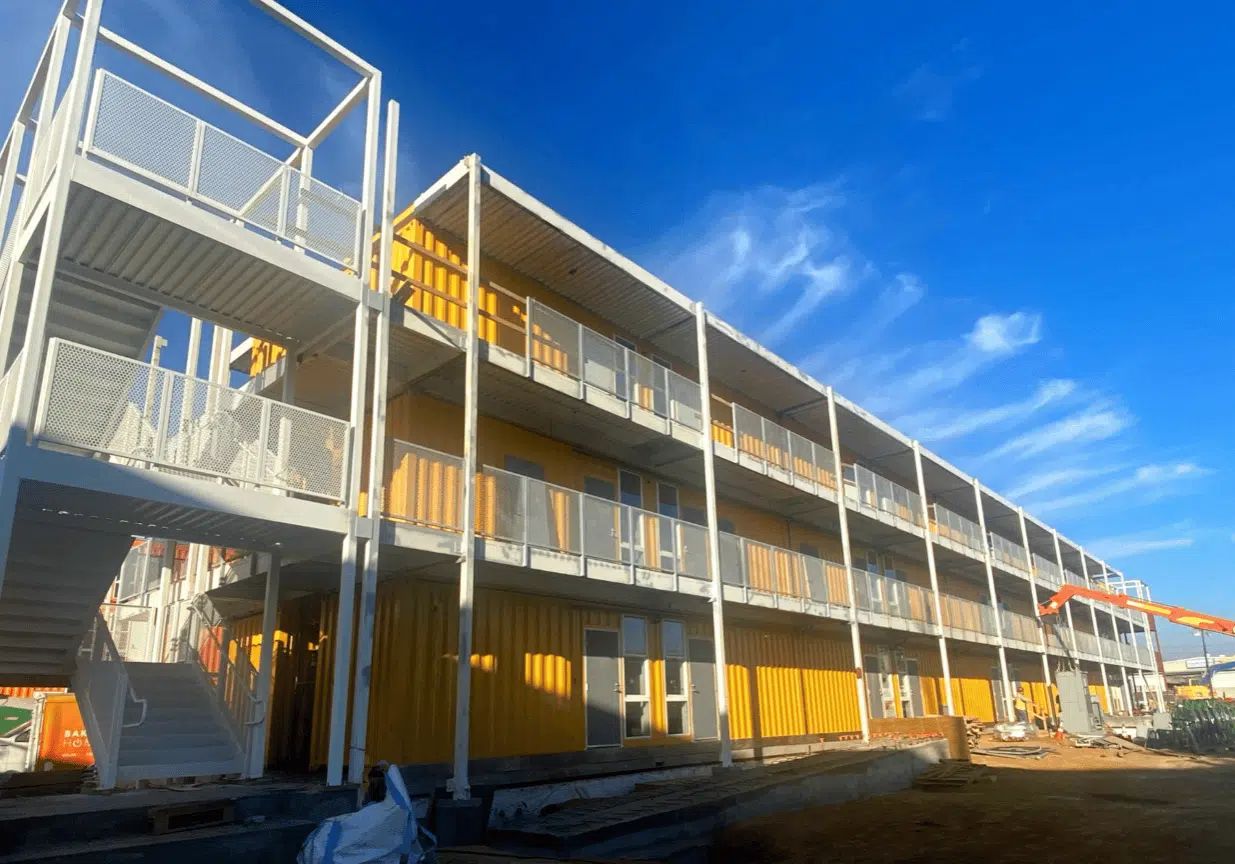
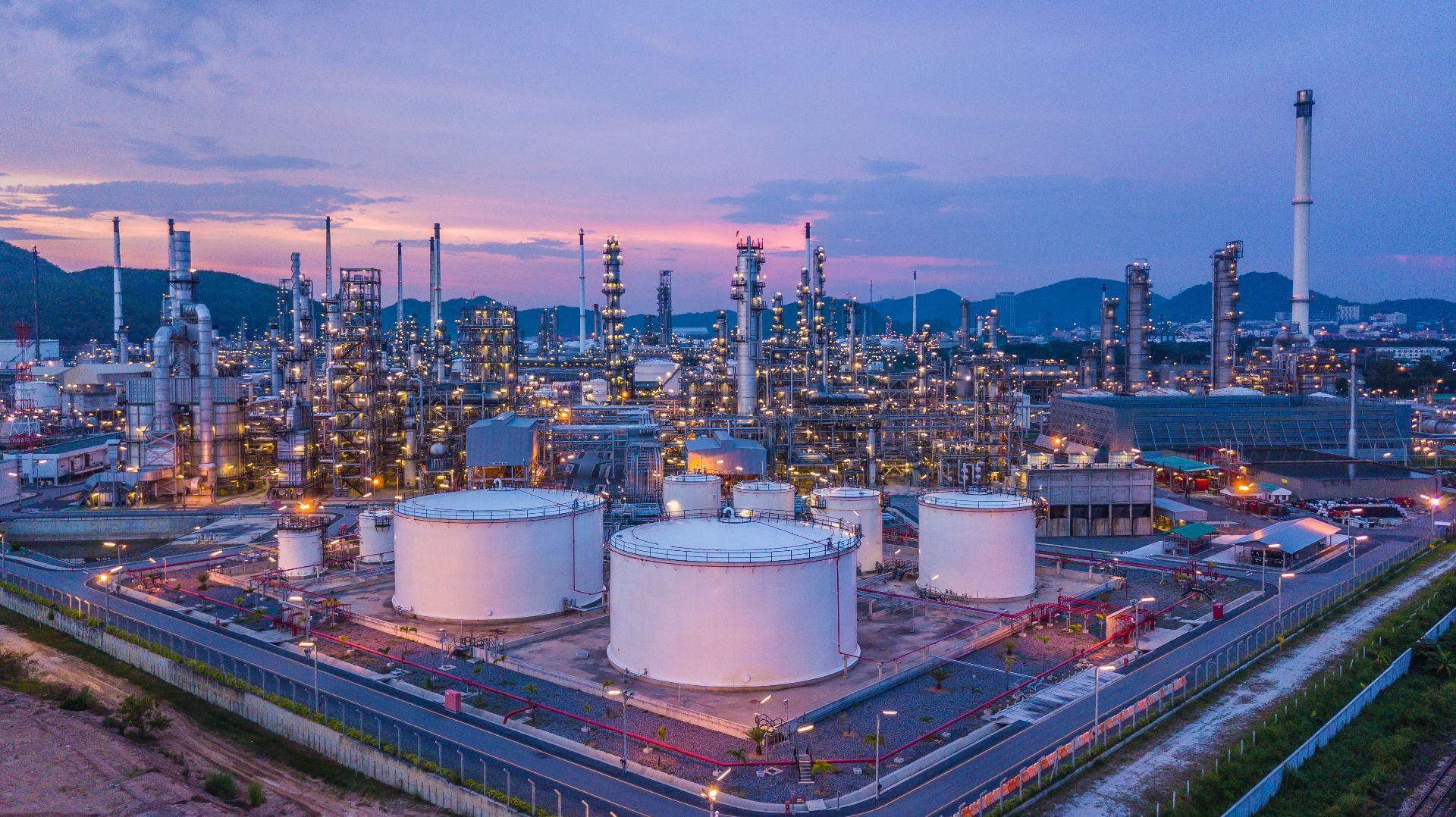
Subscribe to Our Blog
Enter your email address to subscribe to the blog and receive the notification of new posts by email.
Thank You for Subscribing to Our Blog!
Stay tuned for upcoming emails with valuable content that we hope will enhance your experience with our brand.
Both Pardot and mg360 form submissions failed.
